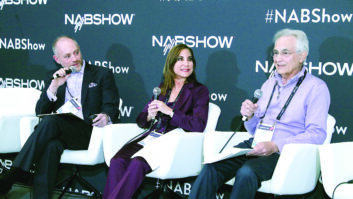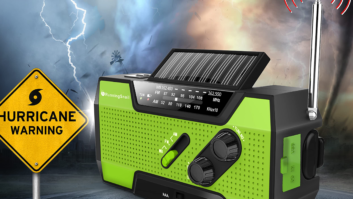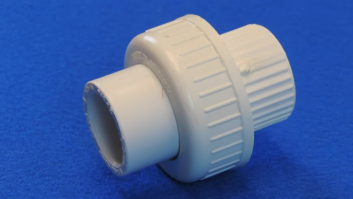The author, a contributor to Radio World, writes here in his capacity as chairman of the Society of Broadcast Engineers Education Committee. RW regularly provides space to SBE as a service to the industry.
In January we opened The SBE University with three online courses. Regular readers are aware that this was a long time coming. The Education Committee has been working on this for almost a year now. The committee and board are pleased to see this effort come to fruition.
We launched the online university with “AM Antenna Modeling,” a course designed to teach engineers how to model AM directional arrays properly in accordance with the new FCC rules and established procedures and practices.
This course was, we felt, timely, coinciding with the effective date of the new rules. It was also representative of the upper end of the kind of online training that we intend to make available, training that addresses the continuing education needs of broadcast engineers.
Proven approach
Moment method modeling is not new. It’s been around for almost 30 years now and has been used widely by professional engineers, experimenters and hobbyists to good effect. Amateur radio experimenters have used moment method modeling extensively in their antenna designs, and much of what we know about modeling, its advantages and limitations comes from this group that is so often on the cutting edge of technology.
Many years ago, a few broadcast consulting engineers began using moment method computer antenna modeling for AM directional arrays in an attempt to better predict the current distribution on the array elements, find operating parameters that are representative of the far field contribution of each element and more accurately predict the driving point impedances of the towers.
These engineers found that computer modeling did indeed make their jobs easier, shortening tune-up times and allowing for better phasing and coupling system designs in many cases.
As they gained experience with the modeling art, a movement was begun to get the FCC to allow the use of moment method antenna modeling in lieu of traditional magnetic field measurements. It was a long and difficult road, but this effort has at long last paid off.
The advantages of moment method modeling of AM directional arrays have been touted exhaustively in recent articles in Short Circuits, Radio World and other industry publications, so there is no need to again list them here. It is, however, important to note that there is one right way and there are many wrong ways to properly model such antennas.
The right way
Clearly, it is important for those modeling AM antennas to do it the right way. “AM Antenna Modeling” seeks to teach the “right way” to model. The procedures and practices taught therein are in accordance with both the FCC rules governing AM antenna modeling and the best practices of the industry. Those who use our online course to learn how to model properly will be well equipped to produce good models that are acceptable to the FCC and repeatable by those who may wish to later confirm the submitted models.
There is another side to modeling, however, that does not take place in front of a keyboard and monitor, and this aspect is every bit as important as any other part of the modeling process.
The one thing that sets apart moment method models produced for AM directional arrays from all others is model calibration.
This amounts to tweaking the model to achieve a match with real-world conditions, and the effect is to remove some of the unknowns from the equation. Assumptions are thus replaced with real-world numbers, and these numbers are obtained from careful measurement of the base impedance matrix in the field. The model is then adjusted so that its calculated base impedances match the measured impedances.
Clearly, the method of making these impedance measurements is critical to good model performance, and “AM Antenna Modeling” treats these measurements in detail.
Then there is the operational aspect of the modeling process, adjusting the antenna operating parameters to the model-predicted operating parameters to properly create the correct pattern shape. We cannot, however, confidently adjust the antenna operating parameters unless we know that the sampling system — the system of pickups, transmission lines and indicating instruments that displays the relative currents and phases of the array elements — is providing accurate indications. “AM Antenna Modeling” deals carefully with the proper method of calibrating the directional sampling system in accordance with the FCC rules.
Whether you are the one who will be doing the actual modeling or the one who will be making the field measurements and adjustments that go along with the model, this online course has something for you.
Those who work in the field providing data to the consulting engineer creating the actual model will have a much better idea of what is required for an accurate model and why. Those who do the actual modeling will learn how to do it properly and what the rules are with respect to the modeling core used and the FCC. Those who do it all will come away with a good understanding of the process from A to Z.
Flight tested
“AM Antenna Modeling” is a product of the SBE Education Committee. We created the course with the kind assistance of experts in the field of AM antenna modeling, and a number of qualified and experienced engineers took the course for a “test flight” before we released it. These individuals suggested improvements and changes, and we implemented most if not all of these. We have a high degree of confidence in the course as it now exists.
As we gain understanding of the modeling process in the context of the new FCC rules, there is no doubt that there will be some fine-tuning of the rules and procedures in the coming months and years. We will do our best to keep the course up to date with any such changes that occur.
Two other courses are presently available as part of The SBE University: “FM Transmission Systems” and “Matching Networks and Phasing.” We have several other online courses in the development queue, including courses on digital television, broadcast telephony and audio processing. Stay tuned for additional releases in the coming months.
For course info, visit www.sbe.org.






